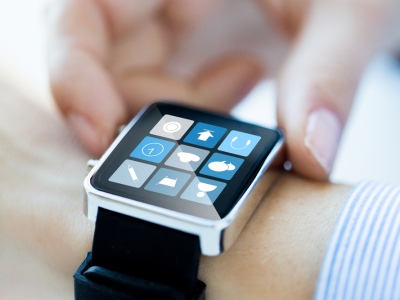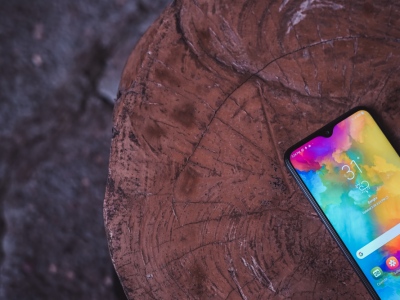Over the last few years, there has been a notable increase in the number of organisations, both public and private, that require their staff to use body-worn cameras (BWC).
As well as police forces and the military, there has been a rise in the number of private security personnel using BWCs. From bouncers at nightclubs to prison officers, more and more private firms and public organisations are using body-worn cameras to stop incidents before they happen, capture incidents that do occur and even hold staff accountable for their actions.

But this change has taken a long time to happen, and it is not a change that everyone is keen to embrace. In this article we look at the rise of BWCs, their adoption by different segments of society and some of the successes and controversies that accompany the technology.
A Brief History of Body-Worn Cameras
Today people are more than happy to record and share even the most mundane of events with the world through apps like Periscope and Snapchat. But this wasn’t always the case. In the UK, CCTV cameras started recording our movements in the 70’s and were met with great opposition at the time and since. Indeed, the stat that the UK has 1 CCTV camera for every 11 people is regularly brought out as a mark against the UK.
Cameras that could be worn everyday first came into the public consciousness with Google’s brief flirtation in 2012 with Google Glass; a device which could live stream video from a camera within the glasses. This immediately raised questions around invasion of privacy and consent, with some establishments banning them before Glass had even been released to the general public.
Although they are still in use in a variety of industries, for one reason or another, Google Glass in everyday life never really took off. But police in the UK have been filming their interactions using BWCs as far back as the mid-2000s. The trials were deemed successful enough for cameras to be issued to over 22,000 Met frontline officers in 2016 and they are now seen as a vital part of an officers equipment in many parts of the UK.
The tipping point for the use of BWCs by police in America came in August 2014. An unarmed civilian, Michael Brown, was shot and killed by police officer Darren Wilson in Ferguson, Missouri. The resulting public response led to, amongst other things, President Obama annoucing that the governement would be providing BWCs to law enforcement officers across the country. Prior to the shooting, only a few dozen smaller police departments had implemented BWC programs. By September 2015 the US Department of Justice had released $23 million to 73 agencies across 32 states to expand the use of body-worn cameras. Washington, D.C, Los Angeles and New York were among the first to start their own pilot programs.
Success and controversies
Since their inception, a number of studies have been carried out to test the efficacy, or lack there of, of BWCs used by the police and in other sectors. One of the main reasons cited for the use of BWCs is that it provides staff with an added level of safety and security at work. And various studies have been carried out that support this idea.
A study published in September 2014 by researchers at the University of Cambridge and RAND Europe showed that body cameras had helped slash the number of use-of-force incidents that police were involved in.
The experiment showed that the technology is perhaps most effective at actually preventing escalation during police-public interactions, whether that’s abusive behaviour towards police or unnecessary use-of-force by police. According to the researchers, the knowledge that events were being recorded during interactions with police created a kind of self-awareness in all participants. Compared with the previous year, the number of complaints brought against police officers dropped by 87%. But the study also revealed a 59% reduction in use-of-force by officers wearing cameras, indicating that the cameras had a positive effect on the behaviour of the officer(s) in question as well as the other party.
This self-awareness is the critical component that turns BWCs into a preventative measure. It causes individuals to modify their behaviour in response to an awareness of ‘third-party’ surveillance by cameras. This helped to create a safer working environment and also led to a reduction in the number of sick days used for recovery from injuries and stress sustained because of a violent attack.
This isn’t always the case, as a police officer in Baltimore who recorded himself allegedly planting evidence found, but generally studies have shown how BWCs postivily influence behaviour. A study in San Diego showed similar successes, with misconduct allegations down 43% and cases of high-level use of force reduced by 16% between 2013 and 2016.
Having BWCs can also help to protect firms and individuals from lawsuits. Many professionals, such as those who carry out repairs on properties while the owner is away use bodycams to protect themselves from liability. With the evidence provided by body cameras, false and frivolous claims can be more easily dismissed. Cases of misconduct can also be dealt with a lot faster.
Adoption by other sectors
Police forces across the US and UK have been quick to adopt body-worn cameras, seeing them as a way to build community trust, provide evidence following confrontations with citizens and hold officers accountable. This has lead to many other sectors utilising BWCs for a number of different reasons.
In Florida, for example, BWCs are used by parking attendants, firefighters and building inspectors. In Iowa, they’re used by principals and assistant principals during the school year to record their interactions with staff and students. In Denbighshire, UK, they’re used by bailiffs and environmental crime enforcement officers. The reason cited by many of these groups is that when people find out they’re being recorded, their behaviour changes for the better.
Workers in the NHS have also been utilising BWCs after seeing a spike in assaults in recent years. Recent figures show that 15% of NHS workers have suffered physical violence from patients or their families in the past year. Official figures revealed there were an average of 154 assaults every day in England, but a union spokesman said the true figure was closer to 200 a day.
As a result, many NHS facilities are turning to BWCs to help protect their staff and patients, with a study carried out last year at an inpatient mental health unit in Northampton highlighting the benefits of wearing BWCs in a clinical setting.
The study at Berrywood Hospital saw clinical staff wear body cameras for every response to alarms on the unit. The outcome was that both staff and patients said they felt safer, and the number of violent incidents and the use of restraints decreased compared to the same period in the previous year.
Despite some successful adoptions, and the potential benefits of using body-worn cameras, many other private security firms have been slow to embrace them. This can largely be attributed to costs, a lack of training and a range of legal considerations.
Although the initial cost of equipping security personnel with BWCs is dropping thanks to advances in technology, private firms do not have access to some of the grant money that is available to public law enforcement agencies. For smaller firms, this can be especially prohibitive.
There is also the cost of video storage and management to account for. Typically, body camera footage is uploaded and stored in an in-house server or an external cloud server. But storing all this video data onsite or in the cloud can be expensive. To help companies with this, some BWC providers, like Hytera with their VM685 bodycam, have tiered options offering different features depending on the number of staff and locations, which may provide some flexibility on price.
The level of training required for using BWCs can be time consuming and is often beyond the capacity of some security firms. In order for staff to begin collecting footage, they will first need to undergo training on how to use the BWC and accompanying equipment. They will also need to create their own policies and provide additional training to staff around these. This will include things like when to turn the camera on, when and how to let people know you’re recording and how to upload the recording to the server.
There are also a number of privacy concerns for security firms looking to adopt body-worn cameras to consider. There’s always the risk that a person recorded by a body camera may attempt to sue the security firm or the business contracting the staff member for invasion of privacy. The risk of this sort of headache is too great for some firms to justify.
BWC’s – The present and the future
Body-worn cameras have become more and more commonplace with law enforcement around the world. And gradually other sectors, both public and private, have caught up. As the technology becomes cheaper and governments agree on legislation, some of the old stumbling blocks will erode, potentially leading to greater uptake from private firms.
Public perception of the devices is also changing as they become more accepted within society. However, this may increase the risk that, as the technology spreads, this could present more opportunities for people to misuse it. The policies and restrictions around when and how police forces use cameras is clear. For the public, it is less tightly regulated.
But some research suggests that a world with more cameras monitoring us may actually be more pleasant to live in. One unforseen consequence of having cameras everywhere, some experts argue, is that it will make us all more tolerant. After all, if some of us have embarrassing videos of ourselves floating around the internet, we might be more forgiving of others who have it too.
Whatever the future holds, one thing we can be sure of is that it will all be caught on film.











Comments